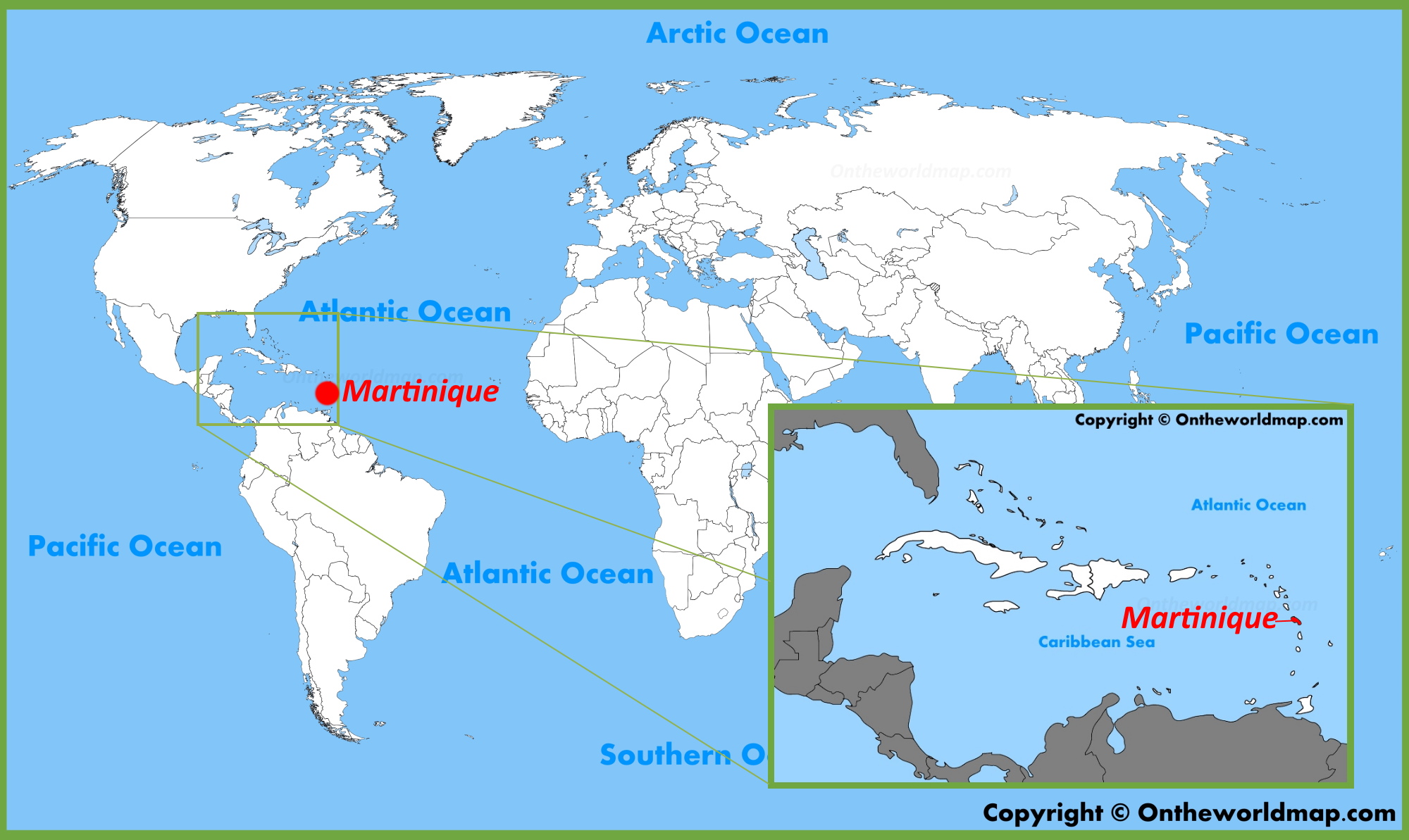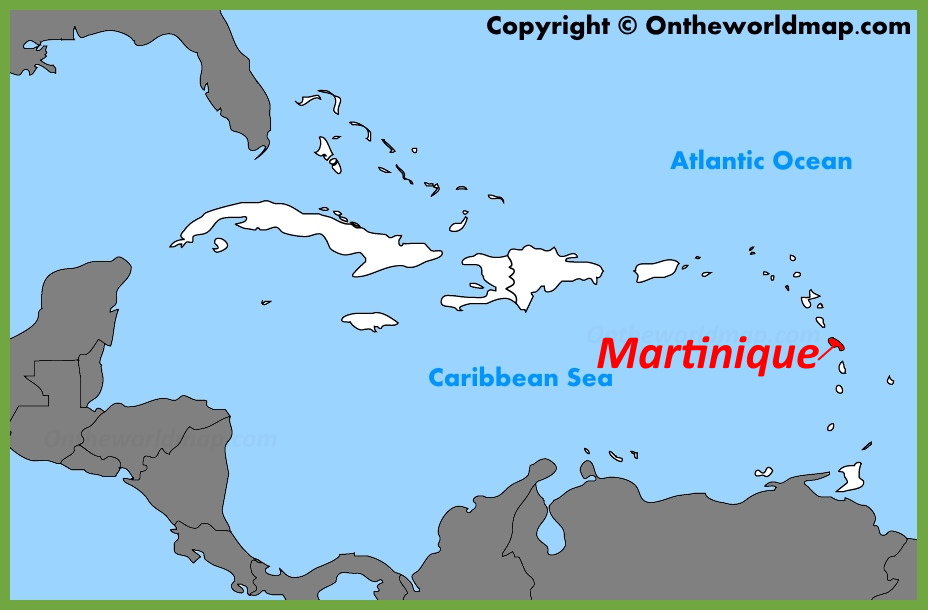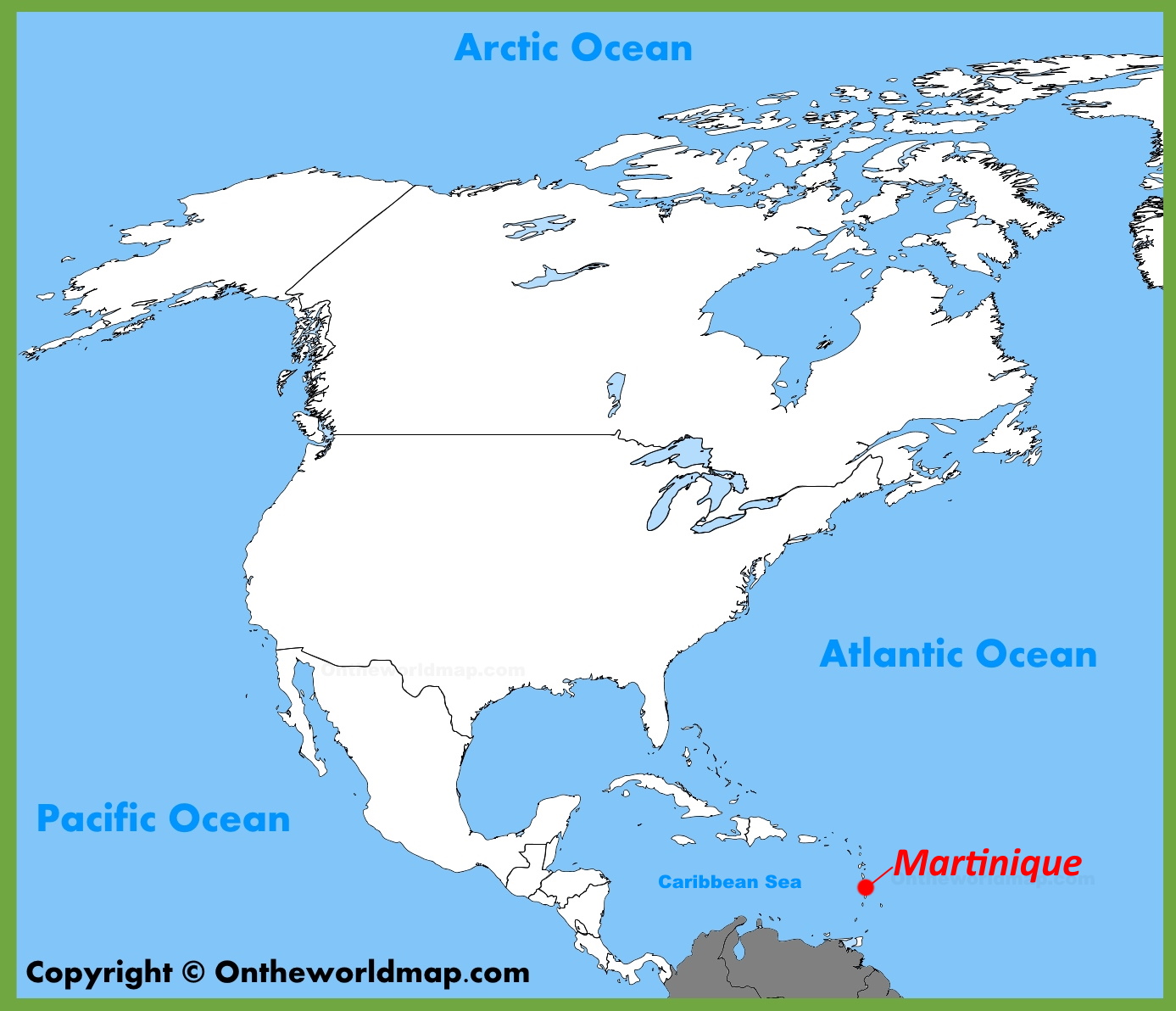Martinique Map
Description:
This map shows islands, arrondissements, arrondissement capital cities, major cities and towns in Martinique.
Size: 1400x1535px / 466 Kb
Author: Ontheworldmap.com
You may download, print or use the above map for educational, personal and non-commercial purposes. Attribution is required. For any website, blog, scientific research or e-book, you must place a hyperlink (to this page) with an attribution next to the image used.
Online Map of Martinique
About Martinique
Martinique, an overseas department of France, is located in the eastern Caribbean Sea, part of the Lesser Antilles. The island has an area of about 436 square miles (1,128 square kilometers) and a population of about 350,000. As a French territory, Martinique does not share land borders with other countries, but it is located next to Dominica to the north and Saint Lucia to the south.
Fort-de-France, the capital and largest city, serves as the administrative and economic center, housing government offices, businesses, and cultural institutions. Other notable towns include Le Lamentin, known for its industrial area and airport, and St. Pierre, historically significant as a former capital.
Martinique's economy relies heavily on tourism, agriculture, and services. The island attracts tourists for its beaches, natural beauty and cultural heritage. Agriculture is centered on the production of bananas, sugar cane and rum, which contributes to both local consumption and exports. As part of the European Union, Martinique benefits from EU financial and trade agreements that promote infrastructure development and economic diversification. The island's integration with France provides stability and access to wider markets, influencing the economic and social landscape.
The Facts:| Sovereign state: | France |
| Prefecture: | Fort-de-France |
| Capital: | Fort-de-France |
| Area: | 436 sq mi (1,128 sq km) |
| Population (2024): | ~ 350,000 |
| Official language: | French |
| Currency: | Euro (€) (EUR) |
| Driving side: | right |
| Calling code: | +596 |
| Internet TLD: | .mq |
| Time zone: | UTC−04:00 (AST) |
Cities and Towns: Fort-de-France, Le Lamentin, Le Robert, Schœlcher, Ducos, Le François, Saint-Joseph, Sainte-Marie, La Trinité, Rivière-Pilote, Rivière-Salée, Gros-Morne, Saint-Esprit, Sainte-Luce, Le Marin, Le Vauclin.
Arrondissements of the Martinique department: Fort-de-France, Le Marin, Saint-Pierre, La Trinité.
Geography of Martinique
Martinique is an island in the eastern Caribbean, part of the Lesser Antilles. The island has an area of 436 square miles (1,128 square kilometers) and its geographic regions are varied, with mountainous terrain in the north and hills and plains in the south. Mount Pele, an active volcano in the north, is the island's highest point, reaching 4,583 feet (1,397 meters).
The island has a tropical climate characterized by a wet season from June to November and a dry season from December to May. Average temperatures range from 75°F to 85°F (24°C-29°C), moderated by northeasterly trade winds.
Martinique's diverse landscapes include rainforests, beaches and coral reefs. These ecosystems support rich biodiversity and contribute to the island's appeal as a tourist destination. Geographic diversity influences local agriculture, with crops such as bananas, sugar cane and tropical fruits grown in different regions.
Brief History of Martinique
Martinique's history reflects a combination of indigenous, colonial and modern influences. Arawaks and Caribs originally inhabited the island before the arrival of Europeans. In 1502, Christopher Columbus sighted Martinique on his fourth voyage. France established the first permanent settlement in 1635 and Martinique became a French colony, an integral part of the transatlantic sugar trade.
Slavery played an important role until its abolition in 1848. The island's economy and society were shaped by plantation agriculture and the labor of enslaved Africans. In 1902, the eruption of the Pele volcano devastated St. Pierre, then the capital, resulting in significant loss of life.
In 1946, Martinique became an official department of France, merging its political and economic systems with mainland France. This status continues to influence Martinique's development and governance.
Maps of France
Cities of France
Cities of France
Regions of France




